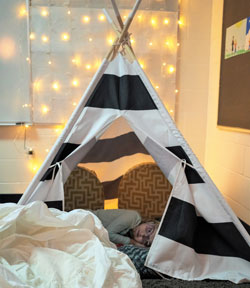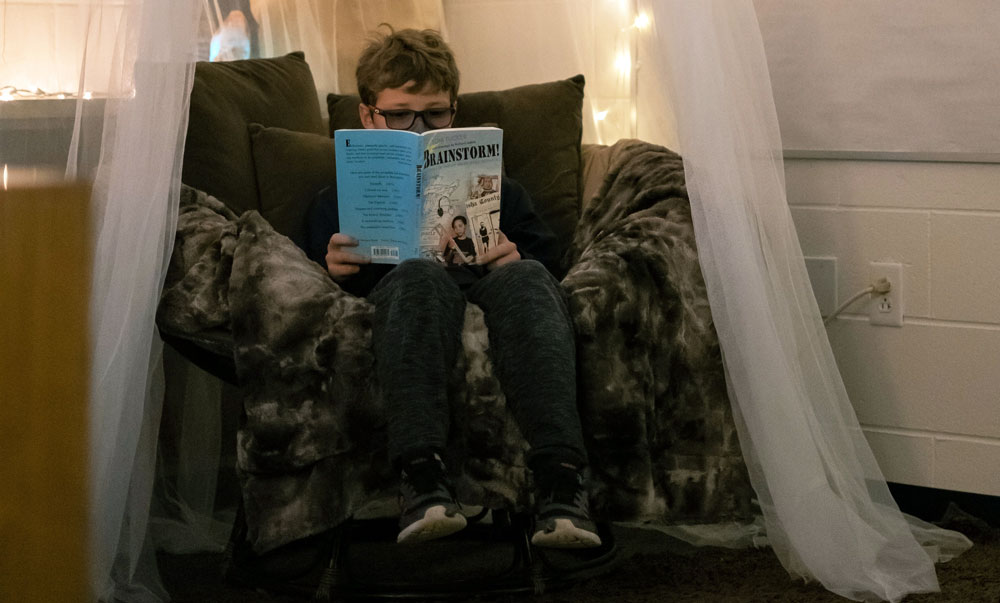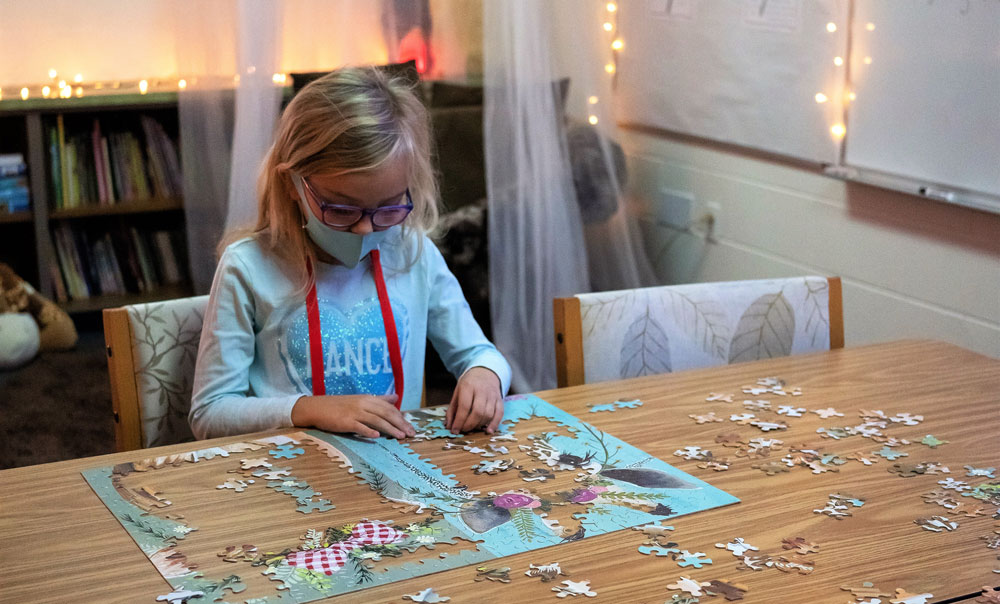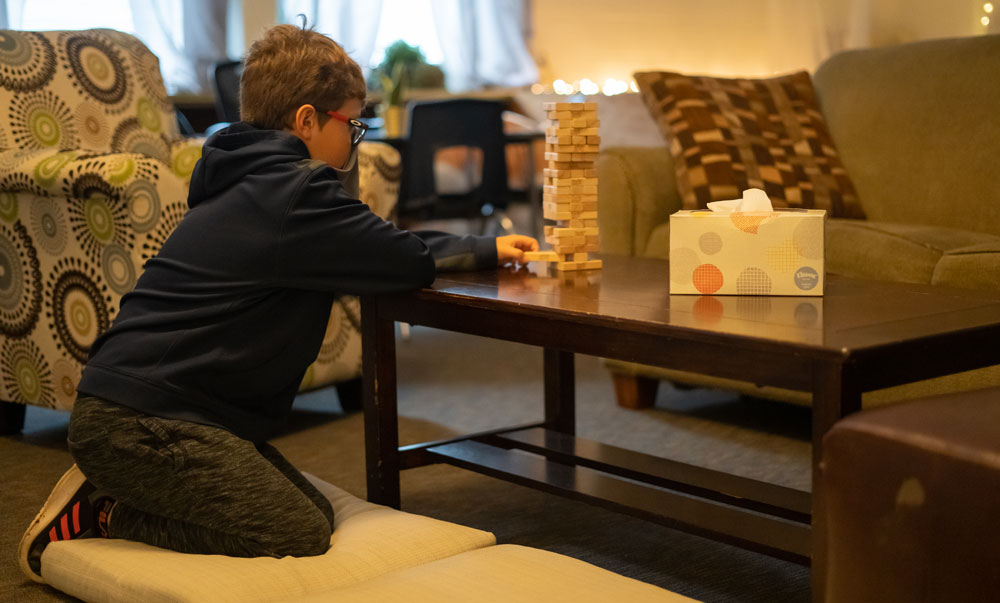Rockford — When Cooper DenBroeder needs a break from his school work or his emotions, there’s a really cool place he can go. It’s called the hygge room.
That’s where he can find a soft purple ball to fling at the wall.
“Sometimes I feel angry or I just don’t feel like I want to do my work,” says Cooper, a fourth-grader at Roguewood Elementary School. “I throw the ball against the wall for a few minutes; then I go back to class and correct my stuff.”
And how does throwing the ball at the wall help, exactly?
“It lets out a lot of leftover energy that I have, so I can focus on my work,” he explains.
It makes good sense. So do the other comforting diversions in the hygge room, such as big stuffed animals, beanbag chairs and jigsaw puzzles. There’s even a tepee to snuggle down in.
‘I want it to feel like a home away from home, like a place that doesn’t feel like the rest of the school.’
– Laurissa Stawicki, school social worker
Adorned with gauzy curtains and Christmas lights, the hygge room – pronounced HEW-gah — has become a welcome retreat for students stressed by the weird demands of learning and living during a pandemic.
The room is also an important part of Roguewood’s mental-health supports for students — always key to their well-being, but even more so in this continuing health crisis.
“I’m finding that kids are using a calming space a lot more than they ever have in the past,” said Laurissa Stawicki, the school social worker who created the room this fall with the support of Principal Teya Cotter.

Scandinavian Concept Catching On
Given the extraordinary circumstances of the pandemic, which has hit Rockford Public Schools hard, “We anticipated our students coming back with new social- emotional needs and wanted to be prepared,” Cotter said.
Stawicki, who works with both general education and special-needs students, wanted to create a kind of sanctuary for them to relax and reset, as well as a larger place for her to do therapy with them. In researching calming environments, she came across the increasingly popular concept of hygge. Originating in Denmark and Norway, hygge promotes interior designs and practices in schools, homes and workplaces to nurture feelings of warmth, comfort and well-being.
Cotter was all for it, having family in Norway and a relaxing hygge room in her own home. Roguewood had an empty classroom available, so Stawicki adopted it as both her office and a hygge room.
“To me, it’s a community space for kids, and I just happen to be here,” said Stawicki, a social worker at Roguewood since 2018, who formerly worked at Helen DeVos Children’s Hospital. “It’s very student-led,” with students free to meet with her or just hang out on the sofa, in a cozy place where they can feel safe and free of frustrations.

Cozy Comforts of Home
“I want it to feel like a home away from home, like a place that doesn’t feel like the rest of the school,” Stawicki said.
She’s created the homey vibe with muted colors, soft lighting and contributions from the school community of comfy chairs, a coffee table, floor lamps, wall art, books, couch pillows and pre-electronic toys like an Etch A Sketch. Students can take to the “crash pad” to play games or assemble puzzles, or slip into a corner tepee to rest on cushions. A screen displays calming nature scenes.
All are designed to enhance students’ feelings of safety and mindfulness, free of worries about the past or future, and to “bring them back to the present moment,” Stawicki said. She’s found students come to the room before emotions get the better of them, and do what they need to in order to regroup and recharge.
“It’s been kind of a magical shift of, look at these kids coping on their own. They know what they need, they just needed a space to do it.”
Students come at their own request or at their teachers’ suggestion, usually one at a time for about 10 minutes, up to three times a day. They cannot come from more than two different classrooms, which must be from the same zones into which the school is divided.
For third-grader Ashleigh Triplett, the hygge room has provided a nice change of pace from this year’s routine, where she must wear a mask and can’t play with other kids who aren’t in her zone. She often comes at recess, sometimes for fun and other times because “I’m mad or need a break,” she said.
“It helps me because sometimes I feel bored, like, ‘I don’t want to do this, it’s too boring,’” she added. “I come down here and do something I like for a few minutes. I feel like, ‘OK, I got some of my energy out doing something I like.’”













